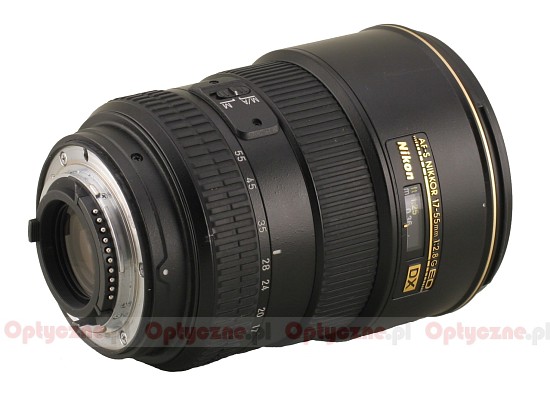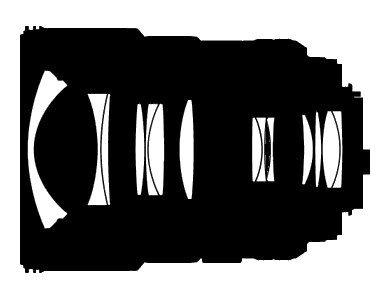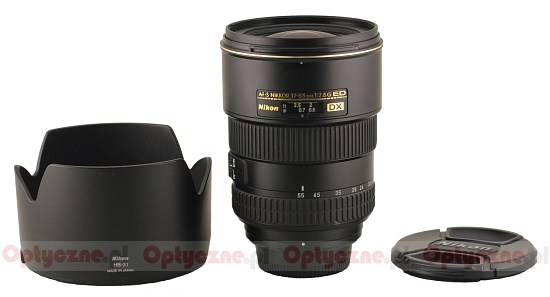Nikon Nikkor AF-S DX 17-55 mm f/2.8G IF-ED
3. Build quality
 |
How does it compares with its competitors? Before we start, it would be good to notice something important: Nikkor was the first lens in that class on the market (introduced in 2004). Both Canon EF-S 17-55 mm f2.8 IS USM, Tamron 17-50 mm f/2.8, Sigma 18-50 mm f/2.8, Pentax 16-50 mm f/2.8 and Tokina 16-50 mm f/2.8 appeared much later.
This table shows clearly that Nikkor, despite the lack of picture stability system, is the biggest and the heaviest lens of all.
Please Support UsIf you enjoy our reviews and articles, and you want us to continue our work please, support our website by donating through PayPal. The funds are going to be used for paying our editorial team, renting servers, and equipping our testing studio; only that way we will be able to continue providing you interesting content for free. |
- - - - - - - - - - - - - - - - - - - - - - - - - - - - - - - - - - - - - - - - - - - - - - - -
 |
On the other hand, one more thing would be also worth checking: is a professional lens, designed to work with a small matrix, smaller and lighter from its full-frame equivalents? We know it can be true with Olympus lenses but is it also the case with a bit bigger DX matrixes? Let’s check it out.
The next table shows clearly that Nikkor 17-55 mm f/2.8, although undoubtedly the biggest instrument in the universal half frame zoom class, is significantly smaller and lighter when compared with full frame 24-70 mm f/2.8 lenses. It is the first significant advantage of using small DX matrixes – our photo kit bag can be smaller and lighter too!
Tested Nikkor 17-55 mm f/2.8 changes its dimensions with the change of focus. The smallest dimensions are possible with about 40 mm focal length. The front lenses system moves forward without rotation of about 0.5 cm to 55 mm focal length and of 2 cm to 17 mm focal length. It’s another pro, when compared with full-frame equivalents, which change their dimensions more substantially with the change of the focal length.
The lens has a metal bayonet at the beginning, after which we find a focus ring. It’s comfortable and works correctly, although it is a bit more loose- fitting in the middle than at its ends. Above the ring on the left there an autofocus mode switch (M/A – M). A bit higher we can find a big, corrugated and comfortable ring for manual focus which enables a user-friendly and precise focus adjustment. One small reservation can be expressed about its rotation- it moves with too much ease. Above the ring there is a clear focus scale in feet and meters behind a glass. The lens finishes with lens hood fastening and non-rotating filter thread, 77 mm of diameter.
Nikkor 17-55 mm f/2.8 is constructed of 14 lenses situated in 10 groups. One might notice that as much as three elements are made of low dispersion glass ED and the next three have an aspheric shape. Inside there is a circular, 9 diaphragm blades aperture, which can be closed up to f/22.

The buyer gets two caps, a lens hood (HB – 31) and a soft case (CL-1120).
 |






